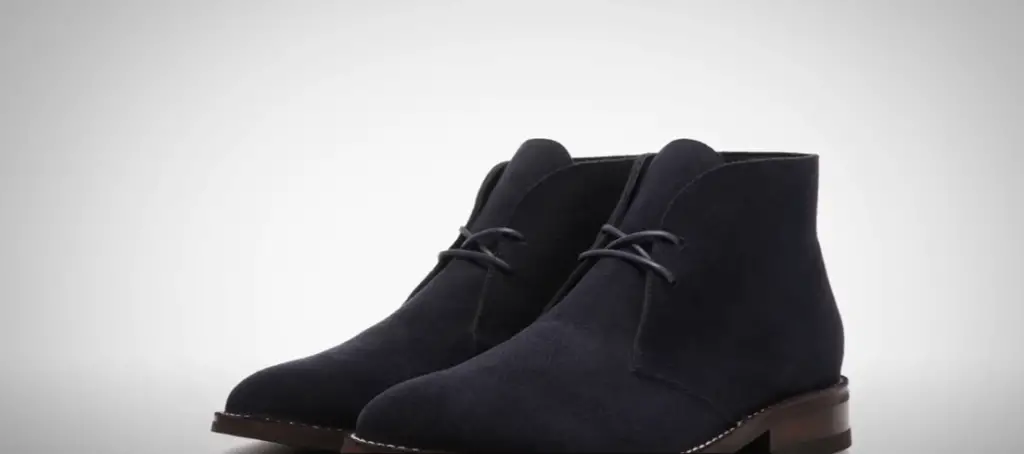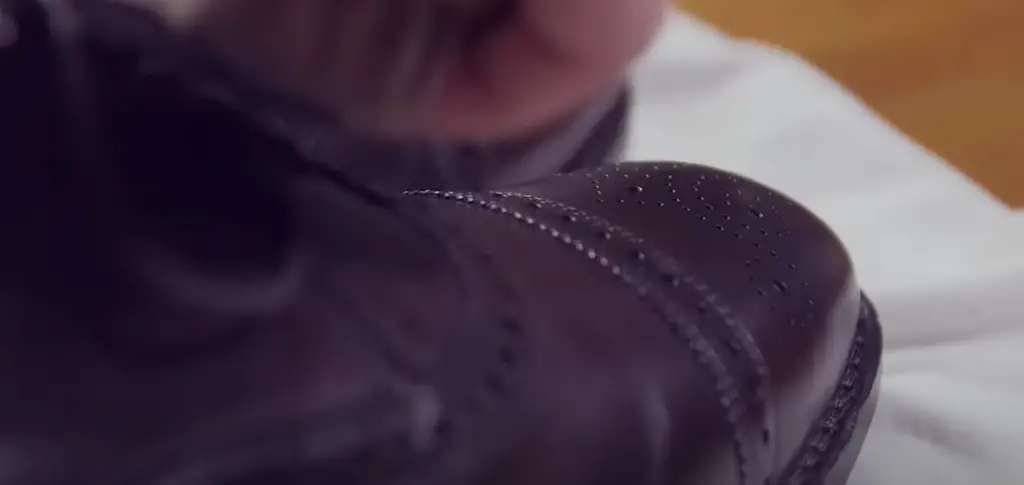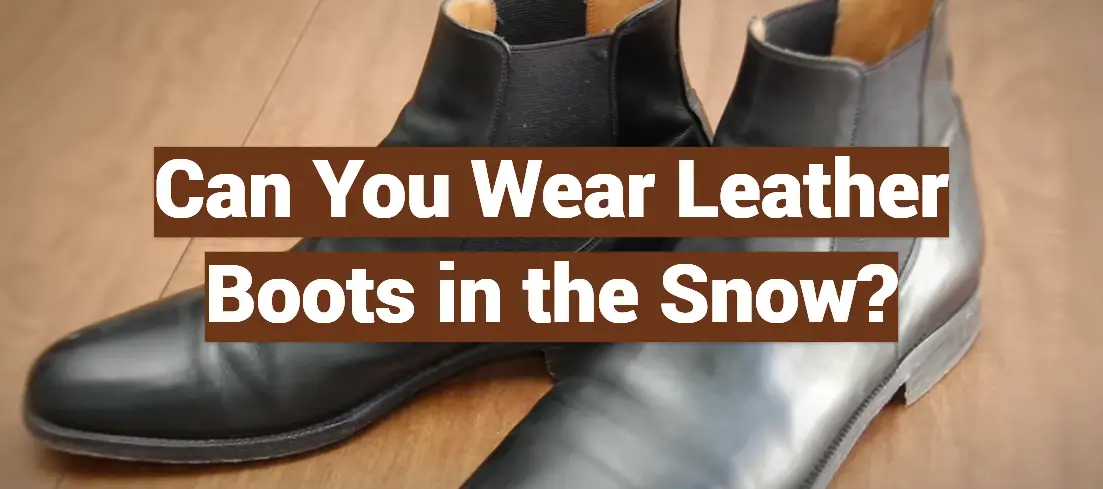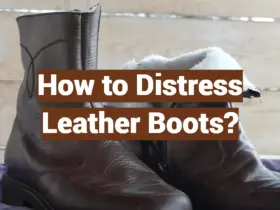As winter approaches and landscapes transform into picturesque scenes of snow-covered vistas, many contemplate the suitability of their footwear for such weather. Among the various options, leather boots often emerge as a popular choice. But the question arises, can you wear leather boots in the snow? This guide aims to shed light on this concern, considering the properties of leather and its behavior under snowy conditions.
What Are Leather Boots?
Leather boots are a type of footwear made from natural materials like cowhide, sheepskin, and other animal hides. These shoes are highly sought-after for their exceptional durability and ability to repel water in cold or wet weather. The leather material also offers additional cushioning and insulation, ensuring your feet stay warm even in snowy conditions.
The quality of leather used will determine how long the boots will last and how well they hold up to wear. Higher-grade leather is more expensive, but it will also provide superior performance in cold weather conditions like snow.

Can You Wear Leather Boots in the Snow?
Absolutely! Leather boots are a fantastic choice for snowy conditions. They offer exceptional insulation and warmth, ensuring your feet remain snug and cozy as you tread through the pristine white powder. So go ahead and confidently embrace the winter wonderland without compromising on style or comfort!
When it comes to winter gear, leather boots are a great choice. They provide the perfect combination of comfort and protection against the elements so you can enjoy your outdoor activities without worrying about your feet getting cold or wet. So don’t be afraid to rock those leather boots this winter and discover the beauty of nature in a pair of comfortable and stylish footwear. [1]
How to Care for Your Leather Boots in the Snow?
After choosing your leather boots, it is crucial to properly maintain them to ensure they remain in excellent condition, even in cold weather conditions such as snow. Here are some tips on how to keep your leather boots looking and performing their best:
- Clean them regularly with a damp cloth. This will help prevent dirt and grime accumulation, which can cause wear and tear over time.
- Use a waterproofing spray or wax to protect the leather from water damage and stains. You may need to reapply the spray or wax every few months for optimal protection.
- To preserve the quality and longevity of your leather boots, it’s crucial to store them in a cool and dry location, shielded from direct sunlight. This simple practice will safeguard the material and significantly extend the lifespan of your beloved boots.
Following these simple steps will help ensure that your leather boots remain in perfect condition no matter what Mother Nature throws at you! So don’t be afraid to brave the snow in your favorite pair of leather boots. With the right care and maintenance, they’ll last you through many winters to come! [2]
Where Can You Buy Leather Boots for Snow?
If you’re in search of high-quality leather boots that can withstand cold weather conditions such as snow and slush, you’ll find an abundance of excellent options available. Department stores like Macy’s and Nordstrom carry a wide selection of leather boots for winter wear, so you can easily find the perfect pair to suit your style and budget.
You can also shop online for a variety of leather boots from retailers such as Zappos or Amazon. Discover irresistible deals on stylish and practical leather boots that will keep your feet cozy and dry, even in snowy conditions.
No matter where you choose to buy your leather boots, make sure to read customer reviews before making a purchase. This way, you can be sure that you’re getting a pair of boots that are both stylish and built to withstand cold weather conditions like snow.

Benefits of Wearing Leather Boots in the Snow
Whether you’re a seasoned snow enthusiast or just starting out, investing in a good quality pair of leather boots can make all the difference when it comes to staying warm and comfortable during outdoor activities. Here are some of the benefits that come with wearing leather boots in the snow:
- Durable and water-resistant material that keeps your feet dry even when walking through snow and slush
- Superior insulation that helps keep your feet warm in cold weather conditions
- Provides extra cushioning for added comfort during long hikes or strolls
- Stylish footwear option that looks great with any winter wardrobe.
So don’t be afraid to go out and enjoy the beauty of nature this winter in a pair of leather boots. With the right care and maintenance, they’ll be sure to keep your feet warm and dry all season long! [3]
Disadvantages of Wearing Leather Boots in the Snow
While leather boots are a fantastic option for braving the chill of winter, it’s important to also weigh the potential drawbacks.
Leather boots can be expensive, especially when compared to synthetic materials such as faux fur and nylon. They also require regular cleaning and waterproofing maintenance in order to keep them looking their best. And because they’re made from natural material, leather can be prone to wear and tear if it isn’t properly looked after.
Overall, leather boots are a great choice for cold weather protection – just make sure you invest in quality materials and take good care of them so they last through many winters to come! [4]
Materials Used for Snow Boots
When it comes to snow boots, there are a variety of materials available depending on your needs and budget. Here is an overview of the most common materials used for cold weather footwear:
- Leather: Leather is highly durable and water-resistant, making it an ideal choice for walking through snow and slush. Higher-grade leather is more expensive but provides superior performance in cold weather conditions.
- Faux Fur: Faux fur is a synthetic material that offers excellent insulation and warmth at an affordable price. However, it does not provide the same durability or water resistance as leather.
- Nylon: Nylon is lightweight and breathable, making it perfect for those who prioritize comfort over protection. It also offers decent water-resistance but is not as durable as leather.
No matter which material you choose for your snow boots, it’s important to select a pair that fits well and provides the level of protection and comfort you need. That way, you can enjoy your outdoor activities without having to worry about cold or wet feet! [5]
How to Make Your Leather Boot Waterproof
If you want to make sure your leather boots can handle any amount of snow and slush, it’s important that you waterproof them correctly. Here are some tips for keeping your boots properly waterproofed:
- Clean your leather boots before treating them with a waterproofing spray or wax. This will help remove dirt and grime buildup that could otherwise reduce the effectiveness of the spray.
- Apply a thin, even coat of waterproofing spray or wax to your leather boots and let it dry fully before wearing them in wet conditions.
- Reapply the waterproofing spray or wax every few months for optimal protection.
By following these simple steps, you can make sure that your leather boots are ready to take on any winter activity with confidence and style.

Types of Leather Boot Styles for Winter Weather
Leather boots come in a variety of styles, so you can easily find the perfect pair to suit your winter wardrobe. Here are some of the most popular leather boot styles for cold weather conditions:
- Ankle Boots: Ankle boots provide ankle support and warmth while still allowing freedom of movement – ideal for everything from hiking to apres-ski activities.
- Mid-Calf Boots: For more coverage and insulation, mid-calf boots are a great option. They offer added protection against the elements while also looking stylish with any outfit.
- Knee High Boots: If you’re looking for maximum warmth and water resistance, knee high leather boots are the way to go! They provide full protection from the elements and make a great accessory for winter fashion.
No matter which style you choose, leather boots are sure to keep your feet warm and dry even in the toughest of winter weather. [6]
Choosing the Right Boot for Snowy Weather
When it comes to the cold months of winter, leather boots can be a great choice for protection against the elements. But choosing the right pair is essential if you want to stay safe and comfortable in snowy weather. Here are a few tips for selecting the perfect boot:
Look for Waterproofing
Leather is naturally water resistant, but not waterproof. For maximum protection against the snow and slush, look for boots that are labeled as waterproof. This can include styles with rubber soles or treated leather specifically designed to repel water.
Choose Appropriate Insulation
Your feet need extra insulation from the cold during winter months. Look for boots with a combination of wool and synthetic materials or insulating liners for the best protection from chilly temperatures.
Pick a Rugged Sole
When it comes to walking in wintry conditions, a rugged sole is important for traction on snowy or icy surfaces. Look for soles made of rubber or other materials that have deep treads for maximum grip on slippery terrain.
Consider the Weight and Height
Winter boots tend to be heavier than other styles due to the extra insulation and waterproofing materials. Heavier boots can make it harder to walk in deep snow, so choose a lighter weight option if possible. Additionally, remember that calf-high styles are usually the best choice for trudging through extra deep snow.
Always Wear Socks
This one may seem like a no-brainer, but socks are an essential part of staying warm and comfortable in leather boots. Wool or synthetic materials work best for moisture-wicking protection against the cold.
With these tips in mind, you can easily find the perfect pair of leather boots to keep your feet cozy and dry during the winter months. [7]

Alternatives to Leather Footwear for Snowy Conditions
When the snow piles up, it’s hard to know what kind of boots to wear. Leather isn’t always the best option in this weather, as it can be less water-resistant than other materials and take longer to dry out if your feet do get wet. So, what should you look for instead?
For a truly waterproof option, choose boots made with a synthetic material like nylon or polyester. Not only are these fabrics water-resistant, but they also tend to be lightweight and breathable – so you won’t feel weighed down by your footwear.
If you’re looking for a bit more traction on icy surfaces, look for boots with a deep tread. This will provide more grip when walking on slippery surfaces, keeping you safer and more secure with every step.
Another great option for snowy conditions is insulated boots. These are designed to keep your feet warm in cold temperatures without sacrificing comfort or style. Look for boots that have a Thinsulate or quilted lining – these materials can help keep the warmth in, making them ideal for snowy days.
No matter what kind of boots you choose, make sure they’re comfortable and fit well. That way, you can be sure your feet are supported and protected in all kinds of winter weather. With the right pair of boots, you don’t have to worry about the snow getting the better of your footwear!
Best Ways to Keep Leather Boots Dry in the Snow
Here’s what you need to do:
- Start off by applying a waterproofing spray or other protectant to your leather boots before taking them out in the snow. This will help keep the boots dry and prevent water damage.
- Another way to protect your boots is with wax, which can create an additional barrier against moisture and dirt buildup in the material of the boots.
- Finally, you should take extra care to keep your boots away from contact with large amounts of water or slushy snow as much as possible. This will ensure that they stay dry and in good condition for longer periods of time.
These simple steps can help you stay warm and dry in the winter months while still enjoying the look of leather boots. So don’t be afraid to pull them out of the closet and hit the snow – just remember to take a few precautions first!
Tips and Tricks to Maximize Comfort in Your Leather Boots
Leather boots are a winter fashion staple and can provide the perfect combination of practicality and style. However, if you’re planning to wear leather boots in the snow, there are several things you should consider to ensure maximum comfort and protection.
First off, make sure your leather boots have a water-resistant finish or treatment, such as wax-based leather treatments or a synthetic coating. This will help keep your feet dry in snow and slushy conditions. Additionally, choose styles that fit well and provide ample room for thick socks to ensure warmth.
Finally, avoid wearing leather boots when walking in deep snow as they are not designed to withstand prolonged exposure to cold temperatures or wet conditions. Opt instead for a waterproof winter boot if you plan on doing any serious snow-walking.
With these tips and tricks in mind, you can enjoy the comfort of your leather boots while staying warm this winter season! Just make sure to keep them dry, insulated, and properly fitted for maximum protection. Now that you know what to look for, go ahead and find the perfect pair of leather boots for your snowy adventures.
FAQs
Can leather boots withstand snow?
Yes, leather boots can withstand a certain amount of snow. Of course, the amount of snow it can tolerate depends on the type of leather and care taken when wearing them. Generally speaking, higher-quality leather boots are more water resistant and will stand up better in snowy conditions than lower quality varieties. To make sure your boots last in the winter months, you should take extra steps to protect them, such as waterproofing or applying a protective layer of wax. Additionally, it’s always best to avoid walking through deep snow in your leather boots unless absolutely necessary.
How should I care for my leather boots?
To ensure that your leather boots are able to withstand the winter weather and last for years to come, it’s important to properly care for them. Make sure you regularly clean and condition the leather, applying a waterproofer or wax when necessary. Also, avoid over-exposure to moisture and extreme temperatures by storing your boots in a cool, dry place away from direct sunlight or heat sources. Finally, if you find yourself caught in a snowstorm while wearing your leather boots, make sure to dry them off and give them a good cleaning as soon as possible.
What other materials are best for winter boots?
Leather is not the only material suitable for wearing in snow. Other popular materials include rubber, synthetic leather, and water-resistant fabrics such as Gore-Tex or nylon. In addition, some brands of winter boots feature waterproof membranes and insulation to help keep your feet warm and dry. Ultimately, the best material for winter boots depends on the type of activity you plan to do in them–so be sure to consider what kind of terrain or weather conditions you’ll be up against when choosing a boot.
Are there any other tips for wearing leather boots in cold temperatures?
Absolutely! Wearing thicker socks can help protect your feet from the cold and make your leather boots more comfortable. Additionally, you should take special care to keep them dry; if they get wet, remove any snow or ice with a brush, let them air dry in a warm place, and then apply waterproofing as soon as possible. Finally, it’s important to wear your leather boots in gradually colder temperatures–start with cool days and slowly work up to the coldest weather so that your feet can adjust.
These are just a few tips for wearing leather boots in the snow. With proper care and maintenance, you’ll be sure to get plenty of use out of them all winter long!
What happens if I don’t treat my leather boots before wearing them in the snow?
If you don’t treat your leather boots before wearing them in the snow, they will be more susceptible to damage. The water can weaken the fibers and cause them to break down over time, leading to cracking or fading of the leather. Additionally, if you don’t properly waterproof your boots before wearing them in wet conditions, they may become soggy and uncomfortable. To prevent this from happening, make sure to apply a waterproofing agent before using your boots in the snow.
What type of leather boots are best suited for snow?
If you plan to wear leather boots in the snow, it’s important to choose a type of leather that is both weather-resistant and durable. Full grain leathers are generally considered the best for winter conditions, as they provide superior resistance to elements like water and cold temperatures. Additionally, some types of suede can be treated with waterproofing agents, making them a great option for snowy conditions as well. Ultimately, the best type of leather for you depends on your particular needs and preferences–so be sure to do your research before making a purchase.
Can all kinds of leather boots be worn in the snow?
Most leather boots are not designed for extreme weather conditions, and therefore may not be the best choice when it comes to wearing them in the snow. If you want to wear leather boots in snowy weather, we suggest looking for a pair that is waterproof or made with waterproof materials. This will help prevent your feet from getting wet and cold. Additionally, look for boots that are insulated and have good tread so you can stay safe on slippery surfaces. By taking these extra precautions, you can enjoy wearing your leather boots without worrying about having cold or wet feet!
Useful Video: Winter Boots Survival Guide | Stop Salt & Water Boot Damage In Wet Snowy Weather
Conclusion
In conclusion, it is possible to wear leather boots in the snow, but you should take extra precautions to ensure that your feet are protected from the wet and cold weather. Look for waterproofed or waterproof materials, as well as insulated and good tread so you can stay safe on slippery surfaces. With these tips in mind, you’ll be able to enjoy wearing your leather boots while staying warm and dry!
References:
- https://www.libertyleathergoods.com/can-you-wear-leather-boots-in-the-snow/
- https://www.chicpedi.com/can-you-wear-leather-boots-in-the-snow/
- https://www.tripadvisor.com/ShowTopic-g1-i12530-k6733447-Can_I_wear_leather_boots_for_snow-Travel_Gadgets_and_Gear.html
- https://menshoefactory.com/can-you-wear-leather-boots-in-the-snow/
- https://nicksboots.com/blog/post/leather-boots-good-winter/
- https://www.bustle.com/articles/123335-is-snow-bad-for-leather-boots-or-are-they-fair-game-for-slushy-conditions-photos
- https://bootworld.com/blog/can-you-wear-leather-boots-in-the-snow.html







Leave a Reply